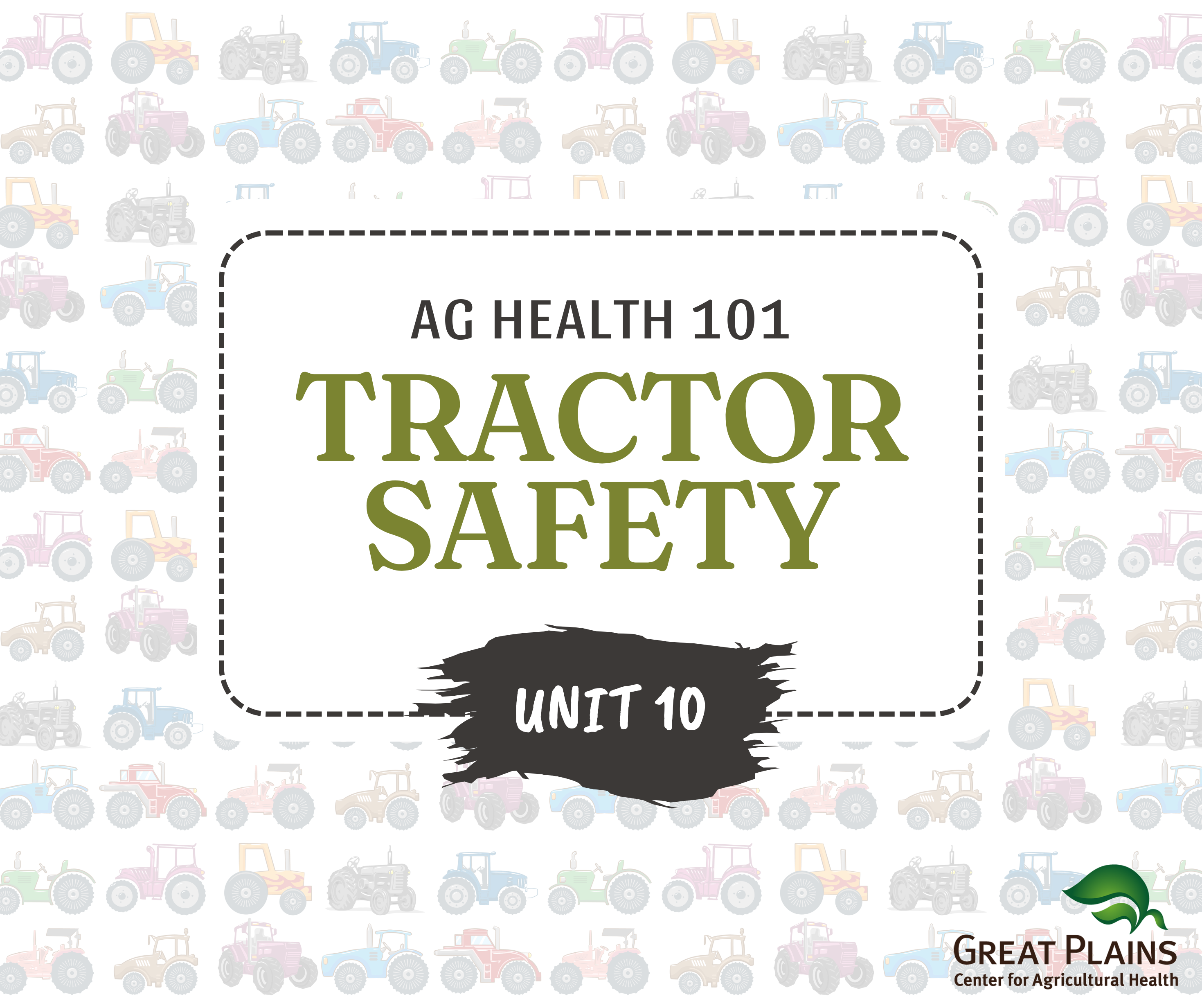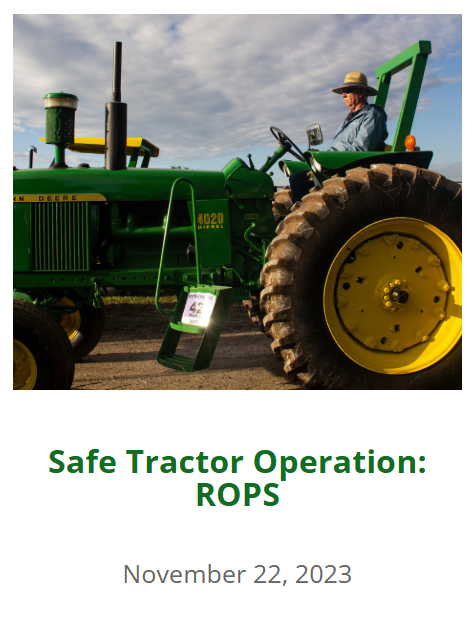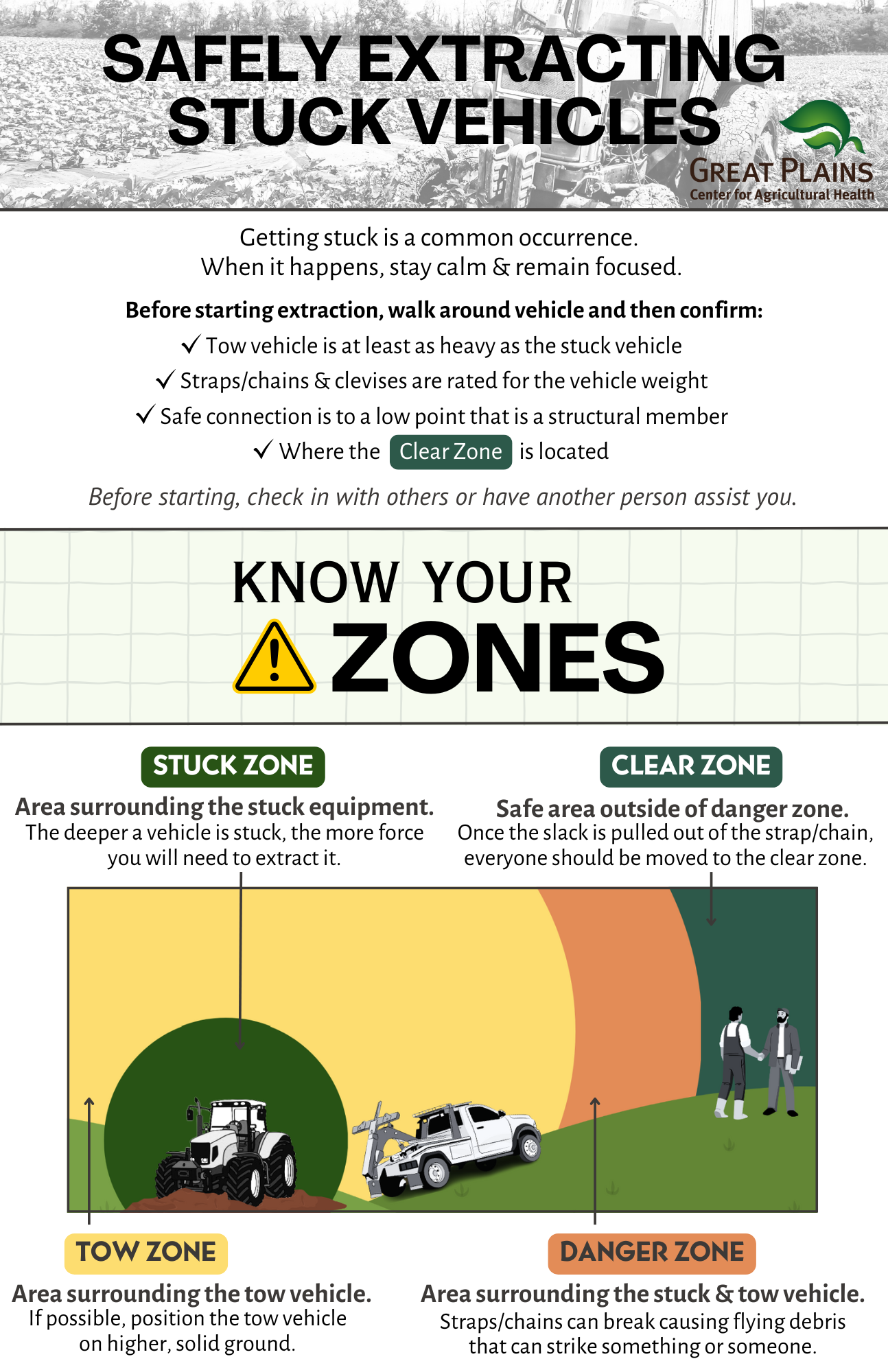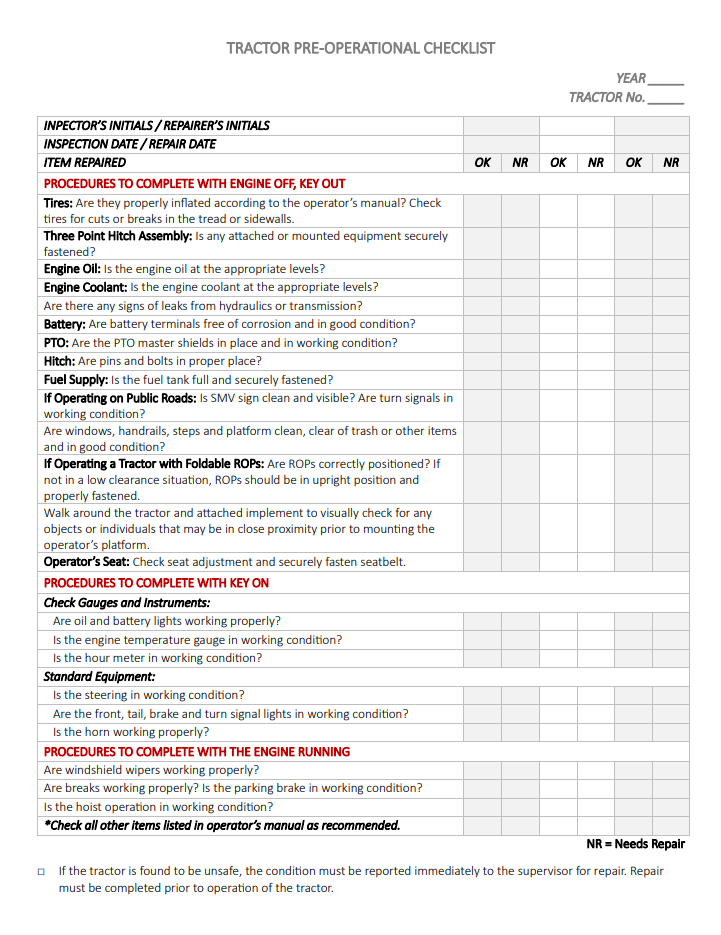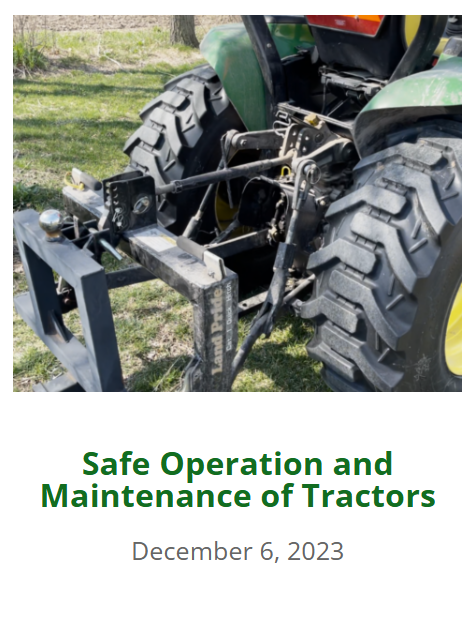Machine Safety Resources
Print Materials: Tractor Roll-Overs
Center of Gravity for Tractors Poster
Dimensions: 11×17
This poster explains how the center of gravity (CG) affects tractor stability, particularly when carrying loads, using three illustrated scenarios: unloaded, rear-loaded, and front-loaded. In the unloaded state, the tractor’s CG is centrally located between the axles, ensuring stability as long as it stays within the wheelbase. When a counterweight is added to the rear, the CG shifts backward, increasing rear stability but reducing side-to-side (lateral) stability. Conversely, carrying a load at the front shifts the CG forward; if it moves beyond the front axle, the tractor becomes dangerously unstable and prone to tipping. The poster emphasizes that maintaining the CG within the wheelbase—regardless of load placement—is essential for safe operation. It warns that front-loaded tractors are more susceptible to tipping and require extra caution. Rear counterweights can help balance loads but may compromise lateral stability. Ultimately, if the CG falls outside the wheelbase in any direction, the tractor is at high risk of rollover.
Additional Resources on Tractor Safety
Ag Health 101
Unit 10. Tractor Safety
This unit introduces listeners to the hazards of operating or working around tractors on the farm. Throughout this unit, you will learn about the safety features on tractors, features of tractors that make operating them different compared to other vehicles, tips for safe operation, and risk factors for common injuries followed by recommendations.
Information from Unit 10. Tractor Safety was used to create the poster, “Center of Gravity: Tractors” (above). Listen to the audio chapters from Unit 10 of Ag Health 101, or view the Unit Summary pages on Tractor Safety, for more information on this topic.
FarmSafe Podcast
S3E2 | Safe Tractor Operation: ROPS
ROPS are 99% effective in preventing injury or death in the event of an overturn when used with a seatbelt according to the National ROPS Rebate Program. About half of all U.S. tractors are not fitted with Rollover Protective Structures or ROPS although ROPS have been proven to be effective at saving lives. Check out our resources to find ROPS rebate funding in your state. Our tractor safety expert for this series is Emily Krekelberg from UMN Extension. We also hear an interview between two other experts, Brad Kruse, who works for the Dubuque, IA fire department, and Diane Rohlman, Professor & Endowed Chair in Rural Safety and Health from the University of Iowa.
Current availability of program funding varies from state to state. Contact your local equipment dealer for more information on additional funding options in your area.
Print Materials: Safe Use of Tractors
Safely Extracting Stuck Vehicles Poster
Dimensions: 11×17
While we may have safely extracted vehicles stuck in the mud before, there is a chance that the next time you might not be as “lucky”. Some best practices include: making sure the tow vehicle is anticipating what would happen if things go wrong, selecting the right tow vehicle, ensuring chains/cables/straps and connectors (hooks, clips) are appropriately rated and connected securely. When extracting, anticipate what would happen if things go wrong, and use information on this poster to guide you through steps and where to stand when connections are no longer slack.
Tractor Pre-Operational Checklist
Dimensions: 8.5×11
It is important to read the operator’s manual and conduct a daily maintenance check on the machinery and implements you plan to use. A tractor is a substantial investment to make farm work more efficient. Even a mid-size tractor may cost $40,000 or more. The tractor needs to be maintained in optimal working order. The cost of downtime for engine and tractor repairs is significant. Parts and labor for an engine rebuild might cost more than $5,000. Harvest delays could mean the loss of a crop in the field. Increased expenses for replacing feeds or protein supplements may result from crop losses. Thus, it is an economic necessity to complete pre-operational checks of tractors and other equipment. These checks help both the longevity of the tractor AND of the farmer who drives it.
Additional Resources on Safe Use of Tractors
FarmSafe Podcast
S3E3: Safe Operation and Maintenance of Tractors
Tractors are costly, and preventing costly repairs can be as simple as taking the time to do a pre-operational check on your tractor. In this episode, we speak with Emily Krekelberg, who provides some useful tips for conducting maintenance checks prior to operating agricultural machinery.

